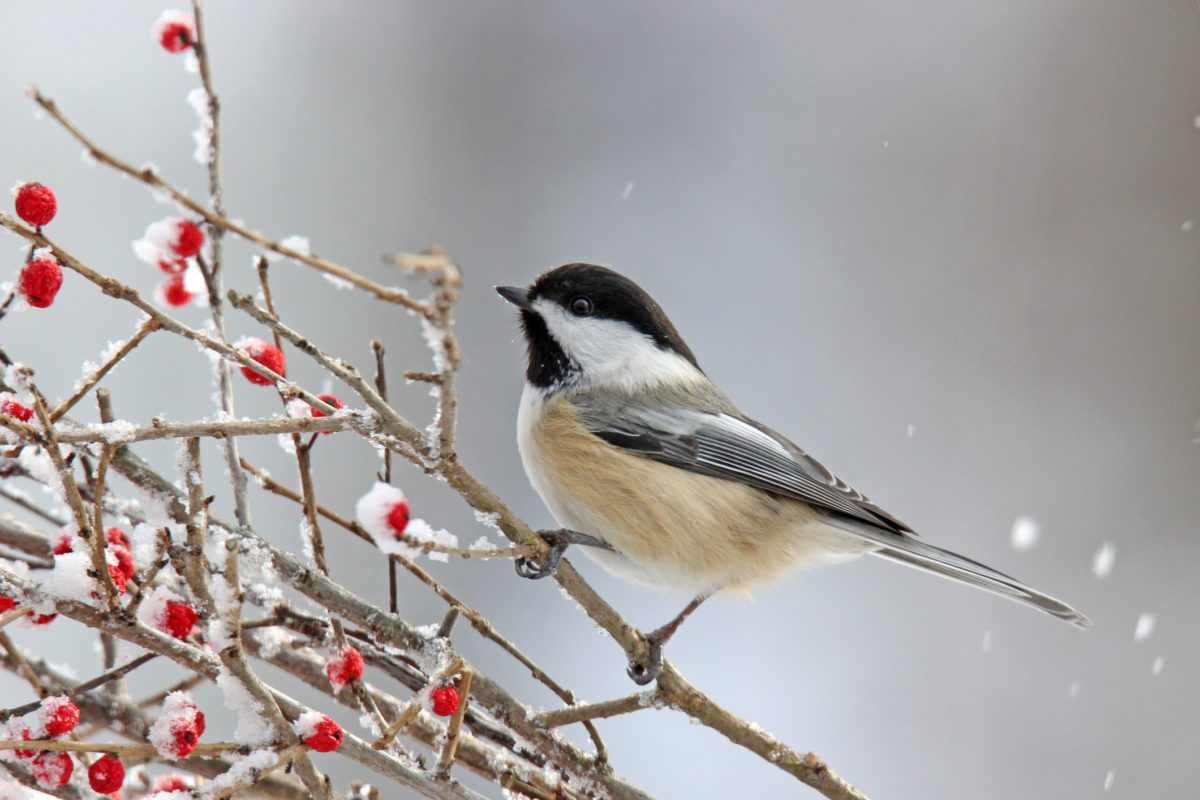
Your landscape can provide food and shelter for birds and wildlife in winter.
During this harsh winter weather, you may think about our wild friends. Birds, wildlife, native bees and other pollinators may have a hard time finding food, water and shelter. If you have a bird feeder, make sure it has plenty of food.
In Harmony has always valued birds, bees and wildlife in the landscape. As we celebrate our 25th year in business, we think about our long-term goal to help our clients live in harmony with nature. Over the years many people have told us that after we started caring for their landscapes, they saw more birds and butterflies.
You can help friendly critters survive in the future by taking some steps in your own landscape. Here are a few things you can do.
Native and flowering plants
The most important step you can take is to incorporate native plants and other flowering plants into your landscape. Native plants will attract many more native birds and wildlife than plants from elsewhere.
Research by the Royal Horticultural Society found that both native and non-native plants attract pollinators. Most important is to plant a mix of flowering plants. Choose plants that bloom at different seasons, so pollinators that are active at different times can find food sources.
- The Washington Native Plant Society has a great list of resources for birds, bees and wildlife. Take a look and daydream about what you might add to your garden this year.
- One of our blog posts has links to some lists of plants for pollinators.
- Houzz has a list of top 10 native plants for the Pacific Northwest.
- Hansen’s Northwest Native Plant database has lists by category: ferns, perennials, shrubs, trees and wetlands.
Garden cleanup
One way you can help birds, bees and wildlife in winter is to take a gentle hand with fall garden cleanup. Yes, you should rake dead leaves off your lawn, pull weeds and pick up fallen fruit. But you don’t want to clean up everything.
Dead plant stems, dried seed pods and faded ornamental grasses provide homes for pollinators and other beneficial insects such as native bees, spiders, ladybugs and beetles. Local, native plants are especially important to keep, as they are most likely to provide food for local wildlife.
The winter garden also provides more visual interest if it hasn’t been cut to the ground. Dead stems lend height, and some seed pods have a sculptural quality.
Leaves in garden beds enrich the soil as they break down. They also provide shelter for a variety of critters. Birds and bugs may look in leaf debris for food over the winter.
Consider leaving logs, brush piles or dead ground cover. They may provide shelter and food for birds and bugs.
Managing pests naturally
If you are reading this blog post, you likely share our concern about pesticides. From the very beginning of our business, we have always focused our lawn, tree and shrub care efforts on keeping plants healthy. Healthy plants can resist insects and diseases naturally.
If there is an occasional pest outbreak, we use the least toxic methods to control it. Using pesticides can be counterproductive because it reduces the population of good bugs that help keep pest insects under control.
Find basic principles of natural pest, weed and disease control in this brochure from Seattle Public Utilities.
A good resource on natural pest control methods is the University of California Integrated Pest Management Program. You can search the user-friendly database by the plant or by the type of pest.
Find out more about good bugs that help your garden from the Local Hazardous Waste Management Program in King County.
